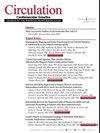肥厚性心肌病基因检测:做大?
引用次数: 2
摘要
本文章由计算机程序翻译,如有差异,请以英文原文为准。
Hypertrophic Cardiomyopathy Gene Testing: Go Big?
Heredity strongly influences multiple cardiovascular disorders, including arrhythmia syndromes, aortic aneurysms, dyslipidemias, cardiomyopathy, and heart failure. Genetic testing has emerged as an effective clinical tool, especially in the cardiomyopathies, because it provides information useful for diagnosis and stratification.1 Genetic testing for clinical diagnosis currently relies on gene panels, where many genes are sequenced simultaneously. With gene panel sequencing, the coding regions of specific genes are first captured and then sequenced. Most mutations detected with this method are single nucleotide polymorphisms or small insertions/deletions. It is also possible to detect larger exonic-level deletions or duplications. Most cardiomyopathy mutations are inherited in an autosomal dominant manner, and these methods can detect heterozygous variants.
See Article by Cirino et al
Cardiomyopathy gene panels have grown in size and scope, and it has now become commonplace to evaluate 50 to 120 genes in a single test, depending on the specific cardiomyopathy subtype and accompanying cardiac arrhythmias.2 Hypertrophic cardiomyopathy (HCM) is a more genetically restricted disease compared with dilated cardiomyopathy. The majority of HCM arises from heterozygous mutations in genes encoding sarcomere proteins with MYH7 and MYBPC3 accounting for 70% to 80% of familial HCM. The limited yield of larger panels combined with the enrichment of MYH7/MYBPC3 mutations has prompted the suggestion that genetic testing for HCM should first focus on these 2 genes.3,4 In contrast, dilated cardiomyopathy is linked to many more genes, with 1 gene, TTN , accounting for 20% of genetic dilated cardiomyopathy, and ≥80 genes explaining an additional fraction.5–7 This genetic heterogeneity has led some to suggest that >1 variant may contribute to disease onset, supporting an oligogenic pathogenesis.
The sensitivity of genetic panels for cardiomyopathies ranges from 30% to 50%, depending on the subtype. The rate of variant discovery should improve as …
求助全文
通过发布文献求助,成功后即可免费获取论文全文。
去求助
来源期刊

Circulation: Cardiovascular Genetics
CARDIAC & CARDIOVASCULAR SYSTEMS-GENETICS & HEREDITY
自引率
0.00%
发文量
0
审稿时长
6-12 weeks
期刊介绍:
Circulation: Genomic and Precision Medicine considers all types of original research articles, including studies conducted in human subjects, laboratory animals, in vitro, and in silico. Articles may include investigations of: clinical genetics as applied to the diagnosis and management of monogenic or oligogenic cardiovascular disorders; the molecular basis of complex cardiovascular disorders, including genome-wide association studies, exome and genome sequencing-based association studies, coding variant association studies, genetic linkage studies, epigenomics, transcriptomics, proteomics, metabolomics, and metagenomics; integration of electronic health record data or patient-generated data with any of the aforementioned approaches, including phenome-wide association studies, or with environmental or lifestyle factors; pharmacogenomics; regulation of gene expression; gene therapy and therapeutic genomic editing; systems biology approaches to the diagnosis and management of cardiovascular disorders; novel methods to perform any of the aforementioned studies; and novel applications of precision medicine. Above all, we seek studies with relevance to human cardiovascular biology and disease.
 求助内容:
求助内容: 应助结果提醒方式:
应助结果提醒方式:


